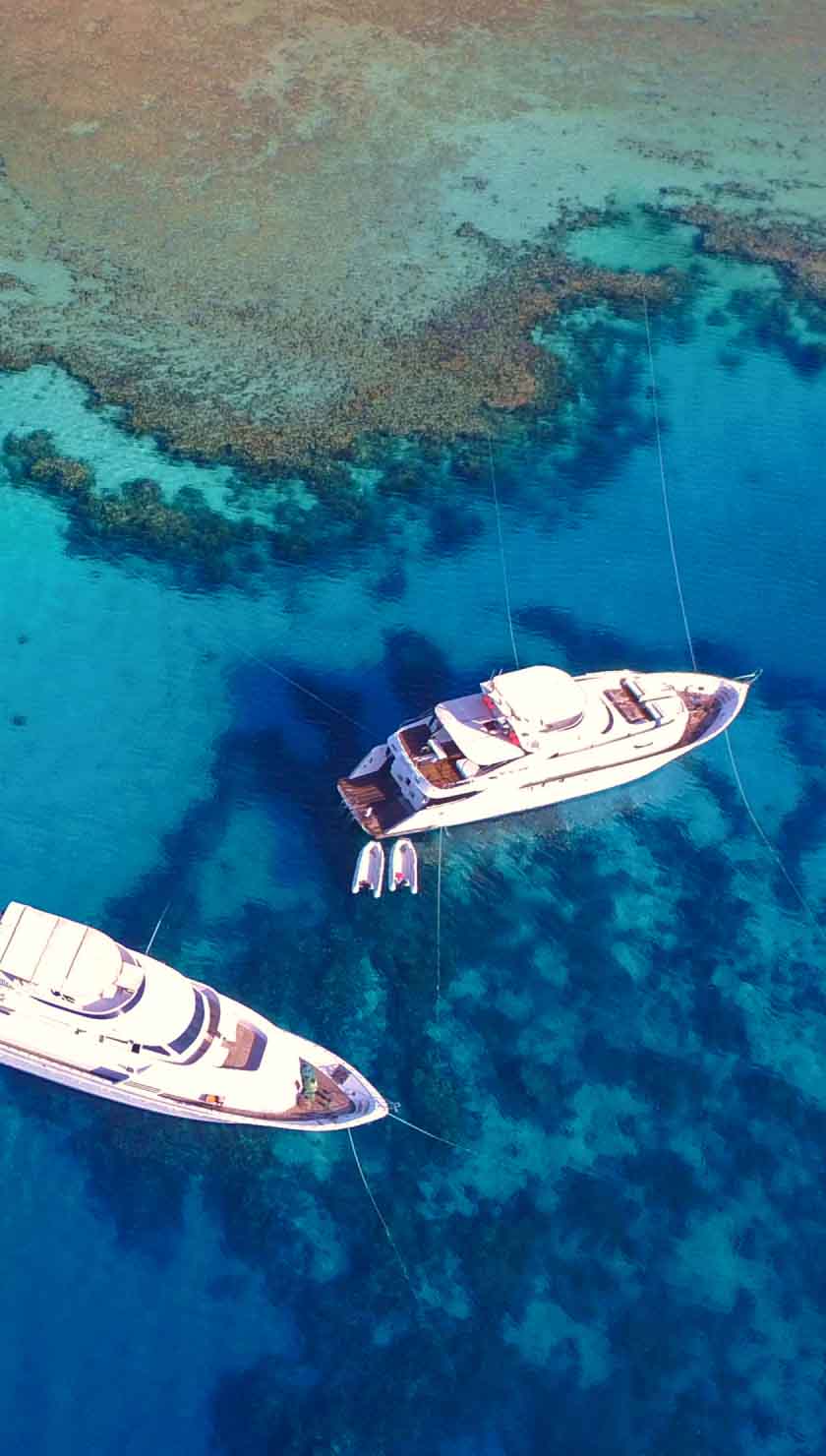Liveaboard Diving in Spitsbergen
What to expect on a Spitsbergen Liveaboard.
Spitsbergen is the only part of Norway’s Svalbard archipelago with a permanent population. A popular destination for Arctic diving holidays, a liveaboard in Spitsbergen allows you to take in the area’s many natural splendors, view plentiful wildlife, and dive in remote spots that would be difficult to access if you did not sleep on your boat. Your luxury liveaboard provides the perfect base from which you can explore this fascinating part of the world.
Scuba diving in Spitsbergen is done in several ways. You may dive from a vessel or try thrilling ice diving, entering the water through a break in the ice. Your experience is sure to be unforgettable as you see an array of underwater flora and fauna, some of which are unique to this part of the world. Polar diving around Spitsbergen is a dream for underwater photography fans. Look out for seals swimming through the water or basking on land or ice.
Other wildlife that you may encounter include whales, walruses, reindeer, Arctic foxes, and diverse species of birds. Various land excursions and other activities add even more to your vacation.
Exciting Spitsbergen cruises, including diving, are available for seven or nine nights. Each vessel has been specially strengthened for ice sailing, and your safety and comfort are paramount.
Spitsbergen Underwater
Summer is typically the best time to take expedition cruises to Spitsbergen. The ice has melted enough for boats to traverse the waters, the temperatures are warmer, albeit still cold, and the underwater visibility is good. May through July offers good polar diving. Summer is also the best time for kayaking. The peak months for tourism in Spitsbergen are between June and August. If you’re itching to see a wild polar bear, July is a good time to visit. You may also spot whales and an abundance of birds during this month. Summer is the famous time of the midnight sun, with long daylight hours.
Dive Sites & Areas of Spitsbergen
If you explore the northern areas, your luxury liveaboard in Spitsbergen will include several fantastic locations. In addition to several places around Spitsbergen, your cruise will also encompass some smaller, remote islands. Longyearbyen is known for its abundant plant life. It also boasts a quaint church and a polar museum. Marvel at Raudfjord’s splendid glaciers, be in awe of the Monaco Glacier, visit the wildlife-rich Hinlopen Strait, and travel within just 550 miles of the North Pole at Phippsøya in the Seven Islands. Other highlights may include Kongsfjorden, Forlandsundet, and Alkhornet.
Alternatively, explore Longyearbyen before setting sail for Krossfjorden, where you can witness the majestic beauty of the 14th of July Glacier. Visit the most northern settlement in the world at Ny Ålesund, traverse the tundra at Reindyrsflya, and Phippsøya in the Seven Islands. This area offers terrific wildlife viewing opportunities. After Sorgfjord and Hinlopen Strait, you can see the third-largest ice cap on the planet and the spectacular polar desert of Nordaustlandet. Other destinations include Sundneset, Diskobukta, Hornsund, and Ahlstrandhalvøya, with its numerous whale skeletons.
Tips For Divers & Polar Diving Considerations
Dive holidays to Spitsbergen are not suitable for beginners; you will not be allowed to dive if you do not have the required experience and skills. Ideally, you will have completed a minimum of 30 dives, including dives in cold conditions. You must show your dive qualifications, logbook, and recent medical certification.
When packing, make sure that you pack all necessary clothing and equipment for cold conditions. You’ll need a dry diving suit with a hood, diving boots and gloves, and thermal clothes underneath your dive suit. You should also take your weight belt. (Weights can be borrowed on the boat.) If you need ankle weights, you will need to take your own. Other necessary items include a snorkel, mask, fins, knife, torch, compass, gauge, stabilizing jacket, and a pressure gauge. While basic equipment, like compressors and tanks, are carried onboard, you must take your diving gear with you. Storage space is available.
Of course, you should also take suitable clothing to go out of the water. Thermal clothing that can be worn in layers is recommended. Despite the cold temperatures, the long sunshine hours can cause sunburn; don’t forget to pack sun cream.
An underwater camera is highly recommended to help you enjoy your future Spitsbergen diving adventure. A tripod is ideal for fans of landscape photography, and a zoom lens can ensure you get great close-up shots of birds and other wildlife.
It is important that all divers are aware of the risks of Arctic diving before diving into the water. Remember that medical assistance (besides the onboard doctor) can be several hours away.
Getting to Spitsbergen in the Arctic
Spitsbergen is served by Svalbard Airport (LYR). The airport is situated in Longyearbyen, the world’s most northern airport. Regular flights operate throughout the year to domestic destinations, including the Norwegian capital of Oslo and Tromso, and seasonal services connect the archipelago with other European destinations. Seasonal charter services include to and from Moscow, Brussels, Zurich, and Copenhagen. The most cost-effective and convenient way for many people to access the departure point for their Spitsbergen liveaboard is to fly to Oslo and then catch a connecting flight to Longyearbyen. Oslo is served by Oslo Airport, Gardermoen (OSL), and there are numerous services around the globe.












